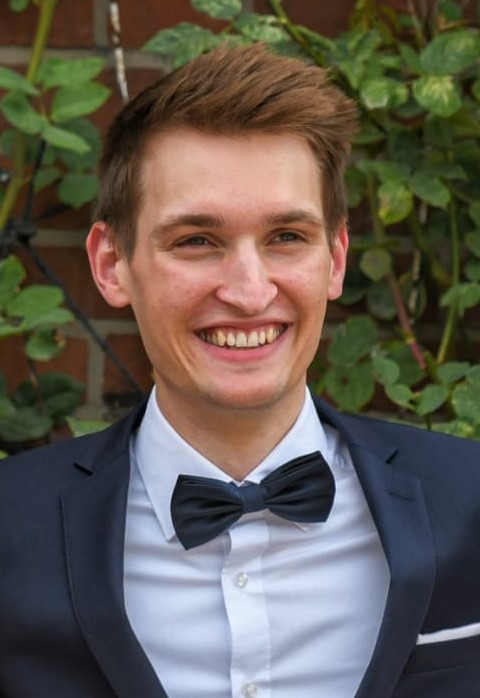
- What’s your name? Where are you from?
My name is Jan-Vincent Harre und I am originally from a small village in Lower Saxony called Brüggen.
- What was your professional career? Where did you study?
After my Abitur [equivalent to A levels/high school diploma] in 2015 I first started studying mechanical engineering at TU Braunschweig, but then I decided to instead study Physics at the Georg-August University in Göttingen. There, I completed my bachelor’s degree at the Institute for Astrophysics and my master’s at the Max-Planck-Institute for Solar System Research.
- How did you arrive at exoplanet research?
I was always fascinated by the subject of outer space, and while I was studying i realized that exoplanet research is the most exciting for me.
- What is your research topic?
We investigate orbital decay of so-called hot Jupiters, i.e. gas giants that are found close to their stars and in some cases orbit it within less than 24 hours. This proximity between the two objects produces strong tidal forces, similar to the Moon and Earth. These forces can cause the planet’s orbit to shrink (“decay”), so that it closes in on the star more and more.
- What scientific questions do you seek to answer?
How does a Jupiter-sized planet end up this close to a star?
How long can such a planet survive?
How efficient is this mechanism for different stars?
- What methods do you use?
Mainly the transit method, because we need exact transit times, i.e. the times during which the planet moves between the star and us and thus covers part of it.
- Why are you excited about specifically your research topic?
Because until now, there is little known about this topic; as of yet, there is only one planet where we could prove this effect via measurements, WASP12 b. Besides, who doesn’t find a planet being able to plune into a star cool?
- How is your research topic integrated into the greater (scientific) context? Where do you see connections between your topic and other scientific fields?
Our research gives information about the central star of a planetary system. With a sufficiently large sample size, our insights can be transferred to other stars.
- Do you regularly work together with other projects of the SPP? If yes, which ones? How do these projects intertwine?
Last year, I was part of the SPP 1992 all-hands-on-deck meeting presented a poster there, this year, I was at the „Hands-on Numerical Astrophysics School for Exoplanetary Sciences“ at Hanau beginning of July, and also I will participate in the „PFE-SPP 1992 joint meeting“ about „(Exo)Planet Diversity, Formation and Evolution“ in the middle of September and present another poster there.
- In what way/To What extent did the SPP-1992 support you and your research?
The SPP-1992 makes it possible for me to visit conferences and workshops, such as the summer school in Hanau or the Carl Sagan summer workshop, both of which have contributed vastly to my knowledge and my research. Also, we have a network of researchers and experts in similar but also other fields available due to the SPP.
- Can you speculate what new insights into your research area we might have in ten years’ time?
We will probably have some more planets with a confirmed orbital decay, since the longer timescales of measurements is extremely helpful in this regard. The effect we want to measure is quite small – in the case of the one planet with a confirmed orbital decay, it is about 30 milliseconds per year. Measurements with newer and more precise instruments will of course also contribute to this.
